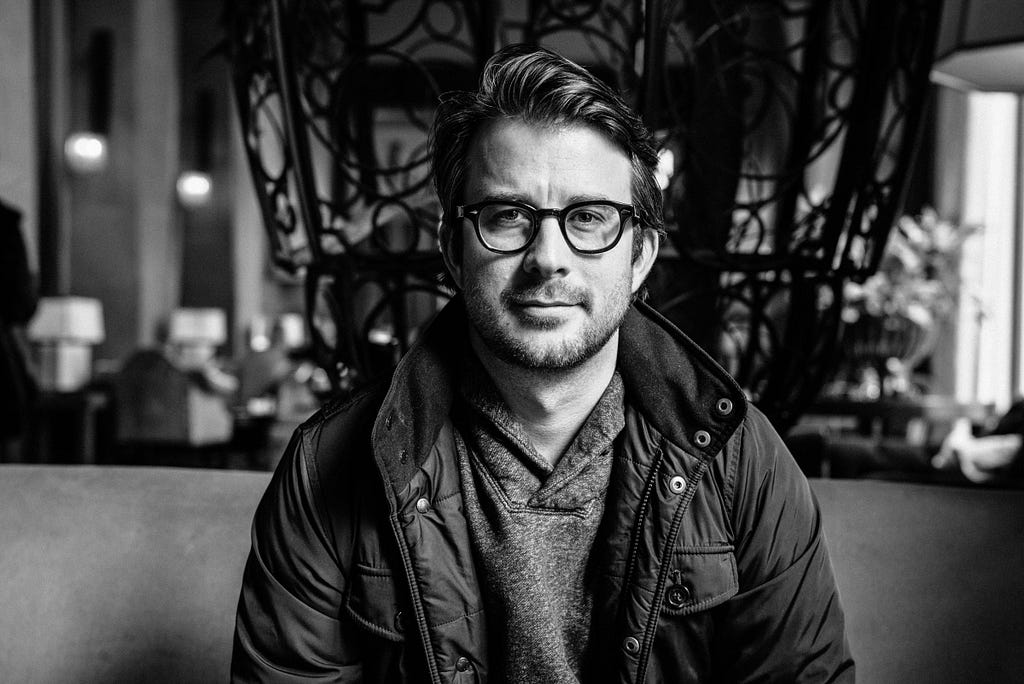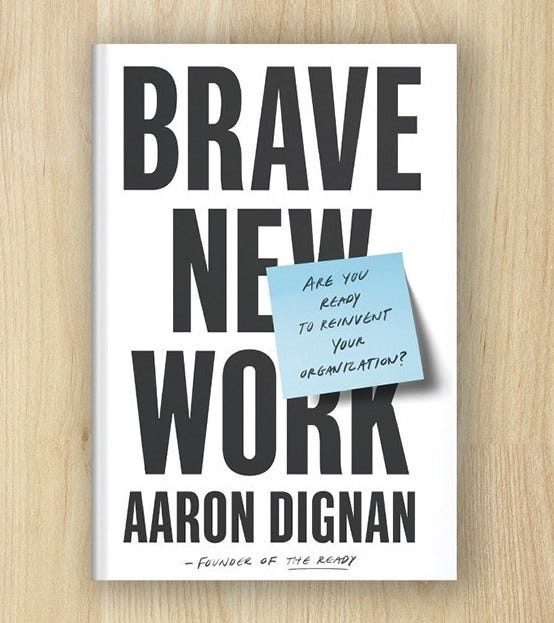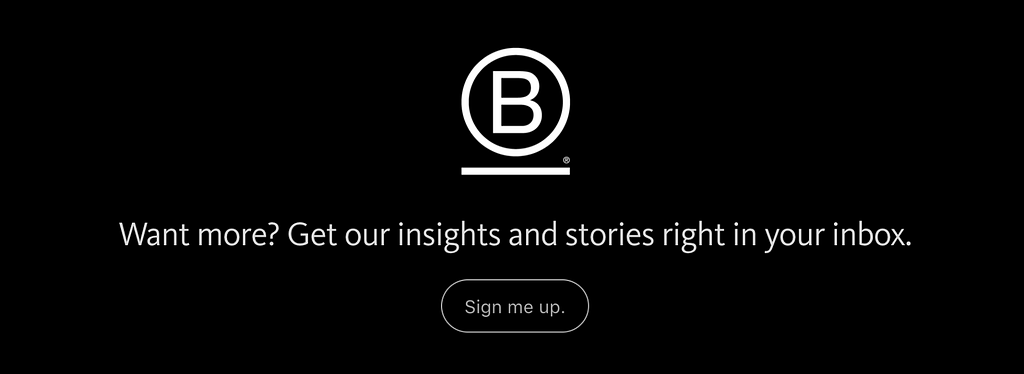Author Aaron Dignan Shares Path to Change in ‘Brave New Work’

By Vanessa Childers
Aaron Dignan is the founder of The Ready, an organization design and transformation firm that helps companies like Johnson & Johnson, Charles Schwab, and Airbnb break free of bureaucracy, hierarchy, and a compliance mindset and create cultures built on autonomy, trust, and transparency.
In his new book Brave New Work, Dignan outlines a new way of thinking about people and organizations — one that trades the illusion of control for something far better: a more adaptive and human way of working.
What is your own story of coming to realize that the way that we work isn’t working?
Aaron Dignan: Earlier in my career, I worked with really large companies like American Express, GE, PepsiCo, and the Gates Foundation, helping them think about digital change, how it might affect them, and how they could take advantage of it. We got a front-row seat inside really large — and in many cases really old — businesses. What we found was a lot of frustration; people who were stuck in an elaborate set of policies, procedures, practices, and norms that were getting in the way. There was a lot of trapped capacity and trapped human potential.
At the same time, we were building our firm. In my desire for it to be great, I tried to control every aspect of it. On one hand, we were progressive about the culture, how people dressed and spoke, and what they worked on. We threw very young people in the deep end of sophisticated client work and let them figure it out for themselves. While it wasn’t an overtly controlling culture, I was still thinking in a very paternal way about how we developed people and gave feedback. While it worked on one hand — we did have a successful business — on the other hand, I was exhausted and my team was stuck at a level of development and performance that was limited by my imagination and the space I made for them. Eventually I got fed up and looked ahead to what we might become, thinking, “There’s got to be a better way.”
So I went on a walkabout. I looked at biomimicry, complex adaptive systems theory, and unusual organizations around the globe. I found that there were systems in nature that were adaptive at scale. I also found organizations and institutions in almost every industry and geography that were doing things differently, that had “flipped the table over” on bureaucracy. I became enamored with that. The problem with our clients, ourselves, our culture, wasn’t any one thing. It wasn’t digital. It wasn’t millennials. It wasn’t the change du jour. It was our inability to adapt and be human at work.
Conscious Company Media is part of the community of Certified B Corporations. Learn more about this growing movement of people using business as a force for good, and sign up to receive the B the Change Weekly newsletter for more stories like this one, delivered straight to your inbox once a week.
For the owner of the small to midsize enterprise, where are some good places to start that aren’t as scary as flipping tables over?
Dignan: One of the safest places to start is with meetings. Meetings are a microcosm of the organization as a whole. It’s people coming together to solve a problem, create something, or decide something. We bring all of our social dynamics with us to meetings. We bring our titles, interaction styles, and biases. This may sound brain-dead simple, but a good practice to start with is checking in and out of meetings. We check in and out by asking a question and hearing from everyone in turn. This isn’t about the question at all. It’s about making space for everyone to use their voice.
One of the things we know about work is that loud voices and personalities tend to dominate conversations and limit the diversity of thought in the room. Within the Fortune 500, there are more CEOs named James than there are female CEOs in total. We have an inclusion problem. One of the ways to fight that is with equality of voice. Studies like Project Aristotle at Google have shown that having equal talk time within teams is one of the best predictors of team success. We know this is a good idea. The trick is to almost prime each meeting by starting that way.
Should there be weekly, monthly, quarterly check-ins to help people integrate purpose into the everyday lives of all the team members?
Dignan: The most important thing about purpose conversations is that they happen. Most people take purpose — and strategy for that matter — and turn it into another pyramid. We say, “Oh, we have to take the purpose and unpack it from the CEO’s office down into each group, and every group’s purpose statement has to match exactly.” We turn it into this big daisy chain of compliance and conformity instead of just saying, “We have a purpose at an organizational level; we need to agree on a purpose at a team level that either supports that directly or diverges from it deliberately.” As individuals we have intent, purpose, and things that drive us. If we can talk about how those do or don’t fit together, then we’ll have shared consciousness about what’s going on.
The purpose of the firm is made up of the commitment of all these individuals who have their own callings. As we change the membership and the anatomy of the organization, and as the world changes, that purpose is always morphing a tiny bit. We need to be checking in about that. There’s a way of looking at purpose called essential intent that comes from the book Essentialism by Greg McKeown. It makes things a little bit more practical.
Vision and purpose can be quite amorphous, like “nourish people and the planet” at Whole Foods, for example. That is motivational, and I can understand how that might be manifested over decades, but it’s also very open-ended. Then there are short-term goals: What’s the project I’m trying to finish? What has to happen this quarter? And so on.
What essential intent does really well is say, “What would need to happen in between — in the next two to three years — for us to be on track to achieve our purpose? Can we keep an eye on that so that we have a source of medium-term motivation?” It’s not completely pie-in-the-sky, and it’s not completely tactical.

What advice do you have for leaders who want to bring these new best practices into their work but who also feel under-resourced?
Dignan: When looking at new ways of working, people often think, “We’d have to invest all of this time to unlock a new kind of performance, but I’m really busy right now.” Yes, there’s an investment, but a lot of that investment, frankly, is emotional and energetic. You get immediate gains in time back, productivity, and creativity.
The metaphor I use is the traffic light versus the roundabout. The traffic light represents that, “I have to make sure we do everything just right, because if we don’t, we’ll have an accident and we’re all going to die.” It’s compliance-based, and it’s a more untrusting approach. By and large, it works. But the second way, the roundabout, works a lot better in so many contexts. It has 80 percent higher throughput. It has 95 percent fewer fatal collisions. It’s cheaper to build and maintain. It works better when the power goes out. Everything about it in most situations — not all, but in most — is superior. It creates a couple of enabling constraints around the participants and then lets them show up and use their judgment to solve the problem.
In the traffic light model, yes, I’m complying, but I’m not always present. I’m waiting for instruction. I’m on my phone while the light is red. I’m not really in the moment. In the roundabout, I’m present the entire time. I have to be. I’m fully engaged. I’m fully committed. I’m giving it everything that I’ve got, basically, to be a responsible participant. That’s the leap.
We’re basically saying, yeah, I have a team of two, or 10, and we’re redlining. We can keep doing the stoplight model, and we can make sure everyone is complying and in a pigeonholed role with a pigeonholed set of accountabilities, or we can acknowledge the complexity in the situation; we can wear multiple hats. We can let people use their judgment. We can set up just enough enabling constraints to keep us safe but leave a lot of room for interpretation and collaboration, and ask that people show up fully to the problem and the opportunity. That is, in my view, the superior way to do it.
Do you see any way to get out of the trap of shareholder supremacy?
Dignan: Well, we got into it; I think we can definitely get out of it. It’s actually a relatively recent phenomenon. It’s in the last 50 years that shareholder supremacy has been born and metastasized. I think the issue is two-fold. One is: What do we as shareholders want? I think we need to do a lot more work as shareholders to define what that is. What do we value? What does winning look like? If winning just looks like great returns at any expense, then we’re not going to like the drinking water in another 50 years.
If we change our conversation at a cultural level about what we expect and what we want to celebrate, then that’s one way to get at it. The other way is just to recognize that it doesn’t work. Even from a purely greed-based standpoint, shareholder supremacy is a strategy that kills businesses over time.
The most successful businesses don’t really sweat what their shareholders want. They care what their customers want. They’re playing long games. They’re investing in moonshots. They’re doing things that the traditional Milton Friedman investor would frown upon, and they’re saying out loud, “We don’t care what the analysts think.”
A lot of the founders of these companies are keeping supermajority voting control of their companies as they go public for this reason. Most of the firms that are dominating the covers of magazines today are firms that have avoided going public for as long as they possibly can and have been figuring out how to do it in a way where they don’t have to be subjected to shareholder demands.
In the future, I think we’re going to see a lot more privatized systems, employee ownership, cooperatives, and people closer to the business and the community the business impacts. In the meantime, I think we will see the broader market and some of the startups that are achieving these great heights going the route of Eric Ries’s long-term stock exchange, or staying private longer, and finding sources of funding that want to tell a different story.
This article was originally published by Conscious Company Media. B the Change gathers and shares the voices from within the movement of people using business as a force for good and the community of Certified B Corporations. The opinions expressed do not necessarily reflect those of the nonprofit B Lab.

How Being Human on the Job Can Lead to Business Transformation was originally published in B the Change on Medium, where people are continuing the conversation by highlighting and responding to this story.